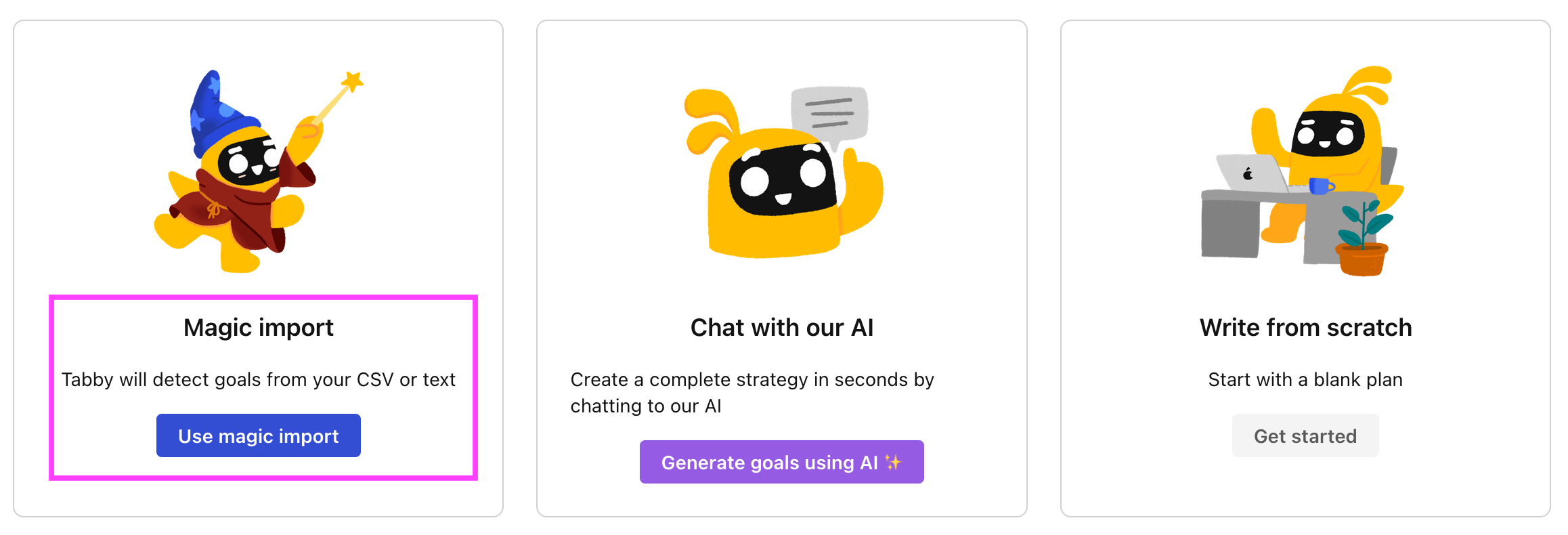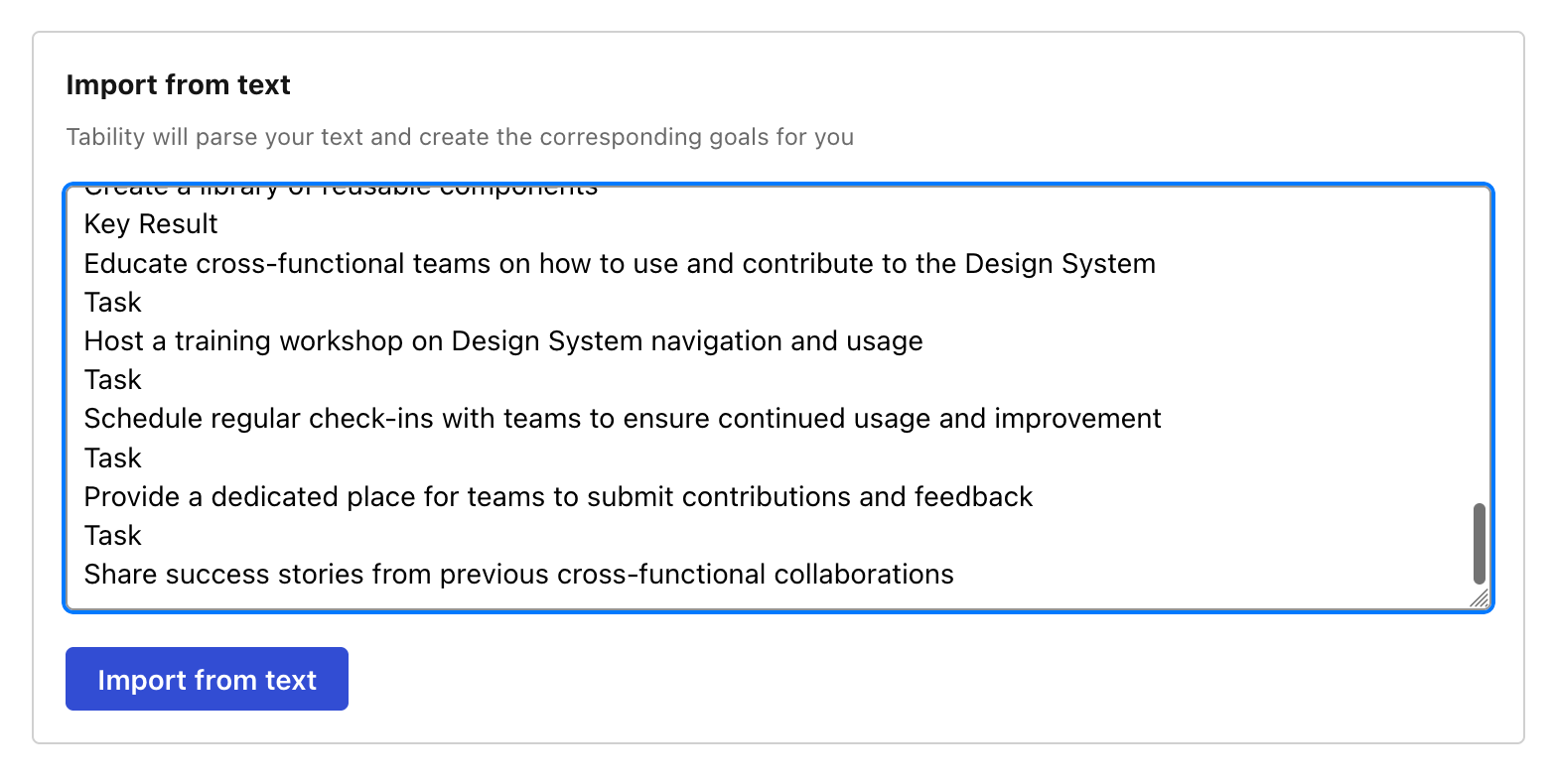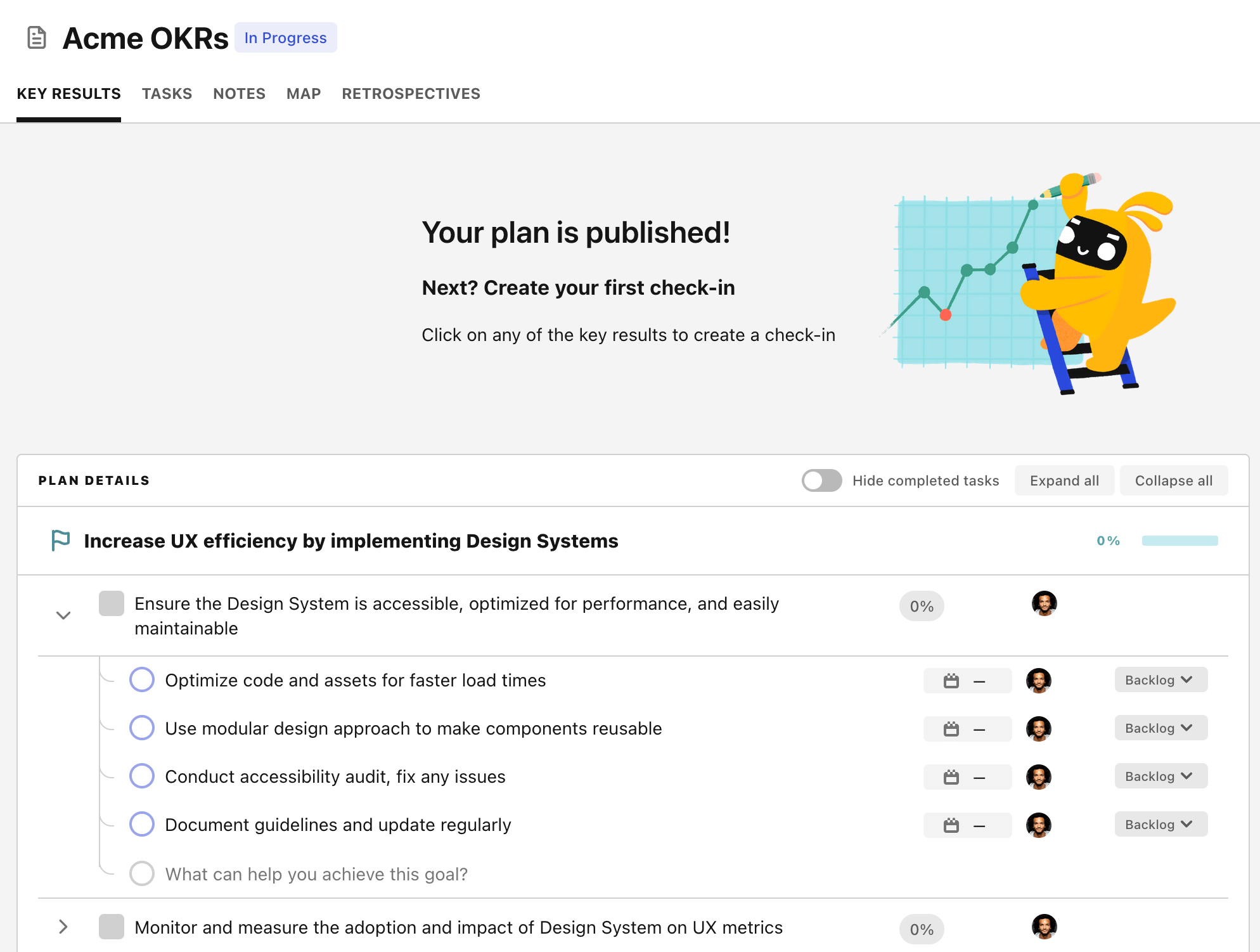OKR template to deliver quality psychological report on time
Your OKR template
The initial phase involves comprehensive baseline research and case study analysis. The team is expected to have clearly defined goals and objectives, gather relevant case studies, and review and summarize the data. This process should be completed in the first two weeks, laying the groundwork for the report.
The second outcome listed is the finalization and proofreading of the report. This process should ideally be completed in the final week. During this time, the team will thoroughly proofread the report, review for content accuracy, and confirm it is ready for submission.
The outcome sandwiched between the research and finalization is the development of the report's first draft. This is expected to be finished within three weeks from the start of the project. Daily focused writing, review, and refining of the draft, and identification of key points for report structure are crucial initiatives to undertake.
ObjectiveDeliver quality psychological report on time
KRComplete baseline research and case study analysis in first two weeks
Outline the research and analysis goals and objectives
Gather relevant case studies for analysis
Review and summarize gathered data
KRFinalize and proofread the report, ready for submission in the last week
Perform thorough proofreading of the report
Review the report for content accuracy
Ensure report is ready for final submission
KRDevelop first draft of report within three weeks of initiating project
Allocate time daily for focused writing
Review and refine initial draft
Identify key points for the report's structure
How to edit and track OKRs with Tability
You'll probably want to edit the examples in this post, and Tability is the perfect tool for it.
Tability is an AI-powered platform that helps teams set better goals, monitor execution, and get help to achieve their objectives faster.
With Tability you can:
- Use AI to draft a complete set of OKRs in seconds
- Connect your OKRs and team goals to your project
- Automate reporting with integrations and built-in dashboard
Instead of having to copy the content of the OKR examples in a doc or spreadsheet, you can use Tability’s magic importer to start using any of the examples in this page.
The import process can be done in seconds, allowing you to edit OKRs directly in a platform that knows how to manage and track goals.
Step 1. Sign up for a free Tability account
Go tohttps://tability.app/signup and create your account (it's free!)
Step 2. Create a plan
Follow the steps after your onboarding to create your first plan, you should get to a page that looks like the picture below.

Step 3. Use the magic importer
Click on Use magic import to open up the Magic Import modal.
Now, go back to the OKR examples, and click on Copy on the example that you’d like to use.

Paste the content in the text import section. Don’t worry about the formatting, Tability’s AI will be able to parse it!

Now, just click on Import from text and let the magic happen.

Once your example is in the plan editor, you will be able to:
- Edit the objectives, key results, and tasks
- Click on the target 0 → 100% to set better target
- Use the tips and the AI to refine your goals
Step 4. Publish your plan
Once you’re done editing, you can publish your plan to switch to the goal-tracking mode.

From there you will have access to all the features that will help you and your team save hours with OKR reporting.
- 10+ built-in dashboards to visualise progress on your goals
- Weekly reminders, data connectors, and smart notifications
- 9 views to map OKRs to strategic projects
- Strategy map to align teams at scale